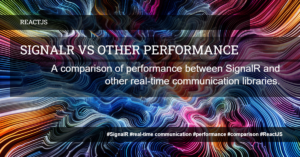Introduction
In today’s fast-paced digital world, real-time communication has become a crucial aspect of web applications. Imagine a chat application that doesn’t update instantly or a live sports scoreboard that lags behind. These scenarios demand a mechanism that allows data to be delivered to clients in real-time.
In this article, we will explore two popular approaches to achieve real-time communication in web applications: websockets and long polling. We will discuss their differences, use cases, and advantages.
Websockets
Websockets provide a full-duplex communication channel between a client and a server. Unlike traditional HTTP requests, websockets allow both the client and the server to initiate communication at any time. This enables real-time data transfer without the need for periodic refreshing or long polling.
Let’s consider a chat application as an example. With websockets, the server can push new messages to the client as soon as they are available, making the chat experience feel seamless and instant. Websockets use a persistent TCP connection and can transmit both text and binary data efficiently.
Long Polling
Unlike websockets, long polling is a technique where the client sends an HTTP request to the server and keeps the connection open until new data arrives or a timeout occurs. If the server has new data, it responds immediately, and the client processes it. If there is no new data, the server holds the connection open until new data becomes available or a timeout occurs.
Long polling is commonly used in situations where real-time updates are required but a websocket connection is not feasible or supported. For example, if a browser does not support websockets or the server does not have websocket functionality, long polling can be a suitable alternative.
Differences and Use Cases
Websockets and long polling have different strengths and use cases. Here are some considerations to keep in mind when choosing between the two:
- Real-time updates: If you require instant updates and bidirectional communication, websockets are the way to go. They are perfect for applications like chat, collaboration tools, and real-time gaming.
- Compatibility: Websockets may not be supported by all browsers and server configurations. Long polling, on the other hand, is more widely supported and can be used as a fallback mechanism for older browsers or servers that don’t support websockets.
Efficiency: Websockets use a persistent connection, resulting in lower latency and reduced overhead compared to long polling. However, long polling can still be efficient if implemented correctly with the right timeouts and error handling.
Security: Both websockets and long polling can be secured using encryption and authentication. However, since websockets maintain a continuous connection, they may require additional security measures, such as validating messages and protecting against DoS attacks.
Conclusion
Websockets and long polling are both viable options for achieving real-time communication in web applications. Websockets provide instant updates and bidirectional communication, while long polling offers compatibility and efficiency benefits. Choose the approach that best suits your application’s requirements and constraints.
Remember to consider factors such as real-time updates, compatibility, efficiency, and security when selecting between websockets and long polling. By understanding the differences and use cases of these techniques, you can make an informed decision for your next real-time web application.






